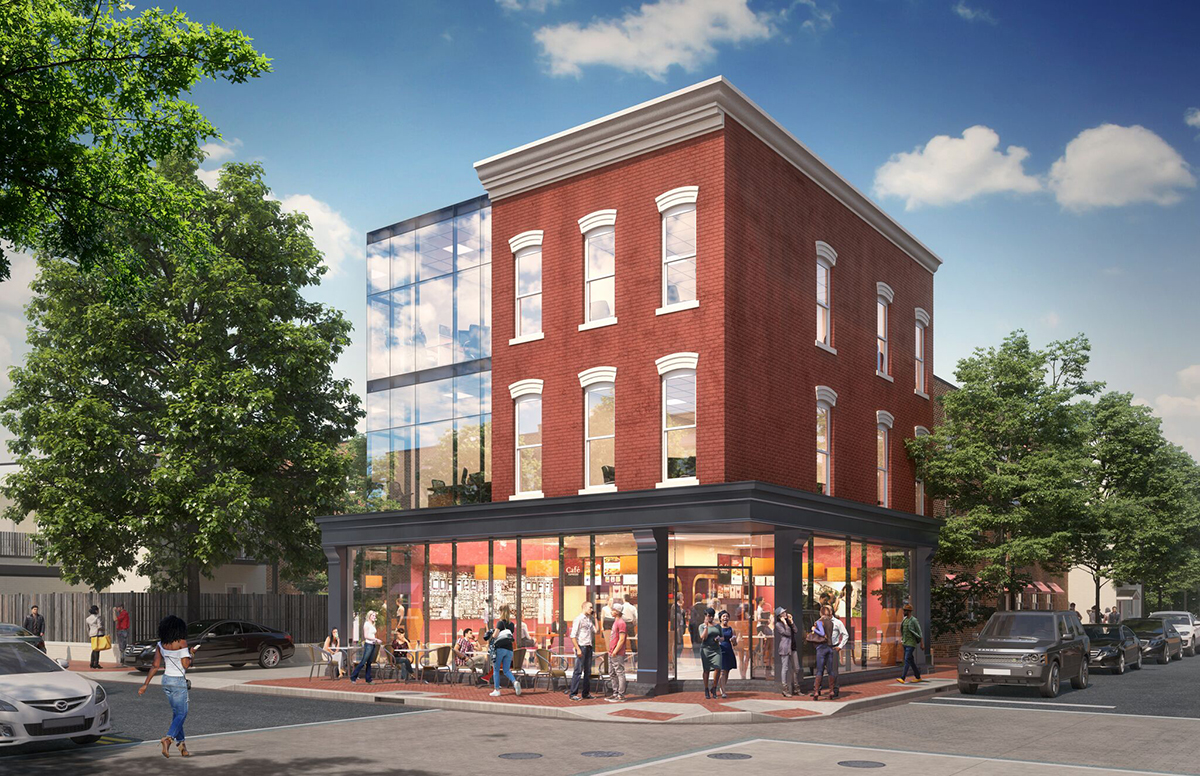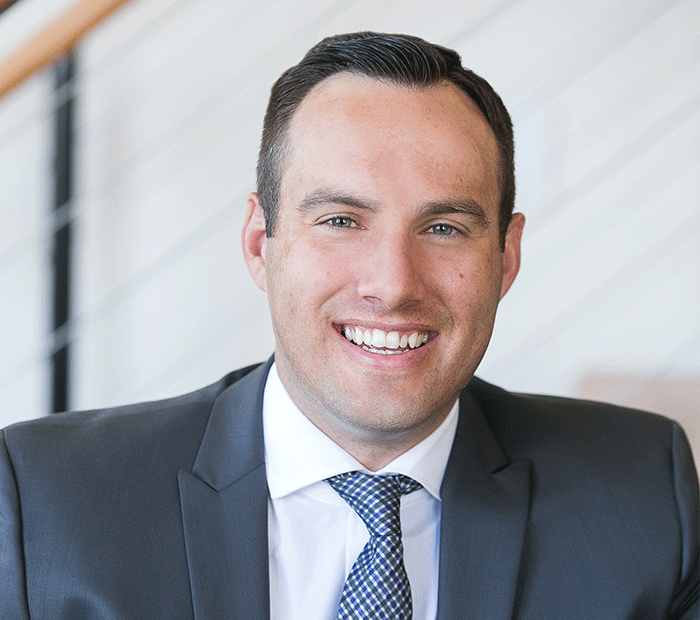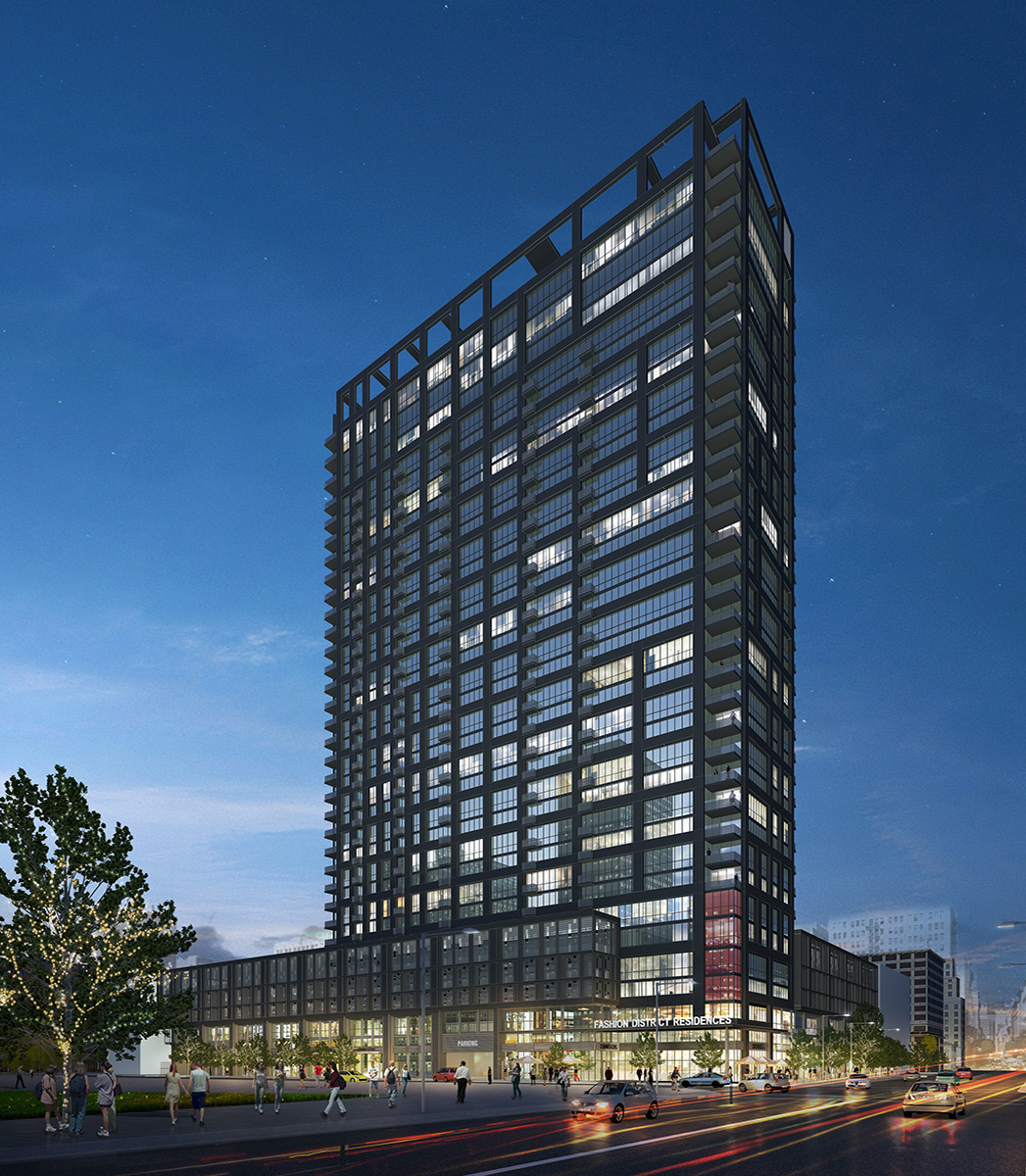Navigating the New Opportunity Zones
Initial reviews of the federal Opportunity Zones Program suggest that it presents attractive incentives to infuse capital into underinvested areas. Do those opportunities outweigh the new initiative’s challenges?
By Alexandra Pacurar

Through its opportunity fund, Fundrise is also working on the rehabilitation of a mixed-use historic property in LeDroit Park district in Washington, D.C.
The Internal Revenue Service on Oct. 19 issued the first set of regulations that clarify the Opportunity Zones Program—the first initiative of its kind in the last 15 years. Judging by the response it received so far, it might well be the most successful one. This first batch of rules will be followed by another by the end of the year.

Derek Uldricks, president of Virtua Capital Management, underlines the importance of educating investors in understanding how opportunity zones work. Image courtesy of Virtua Partners
“So far, the regulations have provided a balanced and reasonable regulatory framework for the opportunity zone program to be successful and allow private capital to fund local infrastructure and local projects that are in need of capital,” said Derek Uldricks, president of Virtua Capital Management—overseeing the capital formation functions and investor processing and securities compliance for the investment funds sponsored by private equity firm Virtua Partners.
The principles of this program appear to be well suited to the investment strategies of companies familiar with 1031 exchanges. Now these firms must face the challenge of adapting to the new regulatory framework.
The economic underperformance of distressed areas suggests that the federal program will find a favorable climate. Research by the Economic Innovation Group, a bipartisan economics-focused public policy organization, shows that more than half of the country’s distressed areas contain fewer jobs and places of business in 2015 than they did in 2000. From 2011 to 2015, when employment was gaining momentum during the early years of the economic recovery, employment decreased by 6 percent in these communities.

One of Fundrise’s first projects in an opportunity zone is the renovation of a creative office building in Los Angeles. Image courtesy of RSE Capital
In exchange for deploying capital that aims to help low-income urban and rural communities, opportunity zones offer incentives, particularly a tax deferral until 2026 if they roll their capital gains into an opportunity fund within 180 days from the sale of an asset. Also, the fund must hold 90 percent of its assets in opportunity zones. The temporary deferral can reduce the amount of taxable capital gains by 10 percent if the opportunity fund investment is held for five years and an extra 5 percent for a seven-year hold. In addition, capital gains on opportunity fund investments held for at least 10 years are excluded from taxes.
“Investors realized, almost immediately, that this program was really unique in terms of tax benefits and as a result we’ve seen strong demand since we launched,” Uldricks said. “Savvy investors, especially those who have experience with 1031 exchanges, understand the tax benefits and are looking at this as a long-term tax solution.”
Virtua is planning several large-scale opportunity zone developments in high-growth Sun Belt metro areas such as Phoenix, Austin, Dallas and Atlanta. “Our investments will be primarily in residential rental properties—multifamily and single-family—as well as select hospitality and commercial properties,” Uldricks said. The program allowed experienced firms to rezone projects now underway to benefit from the opportunity zones incentives.

The opportunity fund zone regulations are much more flexible in allowing the deferral of gains compared to 1031 exchanges, according to Jerome Fink, managing partner at Bascom Group. Image courtesy of The Bascom Group
Realm Group, a joint venture of Realm Estate and Bascom, plans to build a 33-story, 452-unit tower in Downtown Los Angeles’ Fashion District, officially designated as an opportunity zone. The company acquired a 1.7-acre parcel for $24.3 million to build the project. Initially, the developer planned to obtain entitlements on the site, close on the acquisition and partner with an institutional investor, which is typically tax exempt, to complete the construction.
“When this new legislation was enacted, it was an added benefit or the icing on the cake,” said Jerome Fink, managing partner for The Bascom Group. “We are now getting tremendous equity interest from tax motivated investors as this deal works perfectly for the new legislation.”
The known unknowns
The initiative might look like a too-good-to-be-true scenario, but it’s not without its challenges. In fact, it is its novelty that raises more questions and pushes investors to spend money on specialized accountants and law experts. A recent bulletin by Yardi Matrix highlights some of the questions that the National Multifamily Housing Council addressed to regulators concerning the initiative. Among them are:
- How soon do deferred capital gains contributed to an opportunity fund have to be invested in qualified properties?
- Can limited liability companies and REITs set up opportunity funds, or can REIT stock be considered a qualified investment?
- Is land a qualified asset?
- Is there a deadline for funds to make investments and still qualify for the 10-year tax exclusion on gains?

Anchin Tax Principal Jeffrey Bowden recommends investors to analyze how their state has adopted the Opportunity Zones Program. Image courtesy of Anchin
Investors need to be ready for what is expected to be a steep learning curve. “The regulatory framework for the program is very complex, and requires a good deal of specialized knowledge for opportunity zone fund issuers be compliant. As the investment manager, we have to work with regulators to ensure that our projects meet the regulatory hurdles and we must also educate our investors, so they understand how we can deploy capital,” Uldricks added.
Jeffrey Bowden, tax principal for accounting and business consulting firm Anchin, summarizes the opportunity zone investors’ checklist. “First, investors should make sure the investment makes economic sense before participating in this program. Investors should also consider how they will pay taxes required in 2026—do they have a liquidity plan built into the investment? Finally, investors should analyze how their state has adopted this federal program.”
What the future holds
So far, experts believe that the program’s impact on the market will have a positive influence on the balance between supply and demand. “For multifamily, that means developers will use the Opportunity Zones Program to build residential projects that would not have otherwise happened,” Uldricks noted. Bowden expects the initiative to spur an uptick in the value of real estate and transaction volume, with a slowdown as we get closer to 2026, as the benefit of the tax deferral diminishes.

Realm Group, a joint venture between Realm Estate and Bascom, plans to build a tower in Downtown Los Angeles’ Fashion District, an officially designated opportunity zone. Image courtesy of Realm Group
Observers also speak highly of the potential for the Opportunity Zone program to bring unexpected economic benefits to the underinvested locations. “Great achievements in innovation—Google, Airbnb, Uber, Facebook etc.—were completely unforeseen and arguably, initially unintuitive,” said Ben Miller, CEO of the Fundrise, the online investment platform. “If just one of these companies is created as a result of the Opportunity Zones Program and produces 100,000-plus jobs in an opportunity zone, then the tax incentive would in retrospect be hailed as one of the most successful economic development initiatives in history.” Fundrise was among the first companies to establish an opportunity fund and is targeting a $500 million raise by the end of 2019. So far, the company launched two projects through the fund: the renovation of an historic mixed-use multifamily property in the LeDroit Park neighborhood of Washington, D.C., and a creative office renovation in Los Angeles.

Ben Miller, CEO of Fundrise, said that the opportunity zones investment program fits closely to the company’s expertise and business focus. Image courtesy of RSE Capital
“Our goal is to invest in and grow a few specially-chosen neighborhoods by building critical new job-creators, local amenities, and transformative developments through placemaking,” Miller explained. In fact, the social factor is at the core of the program that will encourage the flow of capital into areas that investors might otherwise overlook. “We stress to our investors that nobody should invest in an asset simply for the tax benefits. Those benefits are a factor but not the main or sole motivating factor for making an investment,” Uldricks said.







You must be logged in to post a comment.